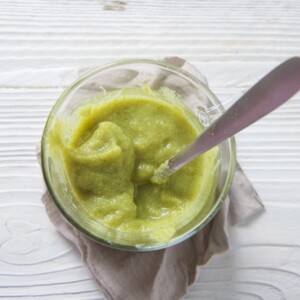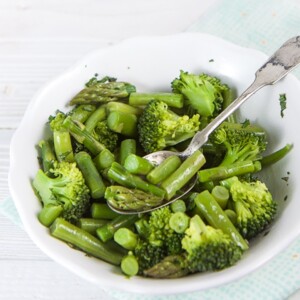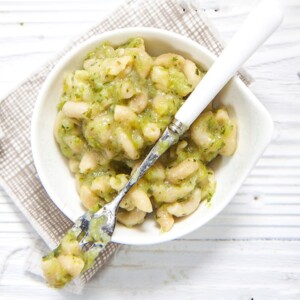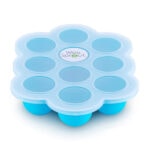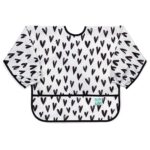How to Serve Asparagus to Baby
With this informative guide, learn how to serve asparagus to your baby. Asparagus is full of essential nutrients, making it a great first food for babies 6 months and up. Serve it as a baby food puree on a self-feeding spoon, as a solid for the finger food stage, or for baby-led weaning.

Medically reviewed and cowritten by Jamie Johnson, Registered Dietitian Nutritionist (RDN), and Lauren Braaten, Pediatric Occupational Therapist (OT).
Asparagus Baby Food
Want to give your baby all the healthy nutrients that asparagus has to offer, but not sure how?
Then, this complete guide on how to feed asparagus to your baby is for you!
Below, you will find everything you need to know on how to cook and serve asparagus to your little one – the health benefits, how to serve asparagus to your baby for baby-led weaning or as a puree, how to store these recipes, FAQs, and so much more!
First time making homemade baby food? Then, I would suggest that you start by reading our very in-depth guides – Guide on how to Make Homemade Baby Food if you are starting with purees, or this Complete Guide to Baby-Led Weaning if you decide to do baby-led weaning from the get-go. And be sure to check out my best-selling cookbook, Little Foodie: Baby Food Recipes for Babies and Toddlers with Taste for even more information and recipes!

Reasons to Love Asparagus for Babies
- delicious baby food purees – 6+ months
- great for baby-led weaning – 6+ months
- also great for the finger food stage – 9+ months
- full of essential nutrients for baby
- easy stage one and combination puree
- different ways for baby to eat – spoon-fed or self-feed
- easy to make
Benefits of Asparagus
Few people think to give their babies asparagus, but early introduction gives your child a taste- and perhaps one day a preference- of the many health benefits asparagus provides!
- Asparagus is a good source of fiber, especially prebiotic fiber, which is the food for the good bacteria in your gut.
- High in vitamin K, needed for bone health and blood clotting.
- A good source of iron, which is especially important for babies 6 months and older to help prevent iron deficiency anemia.
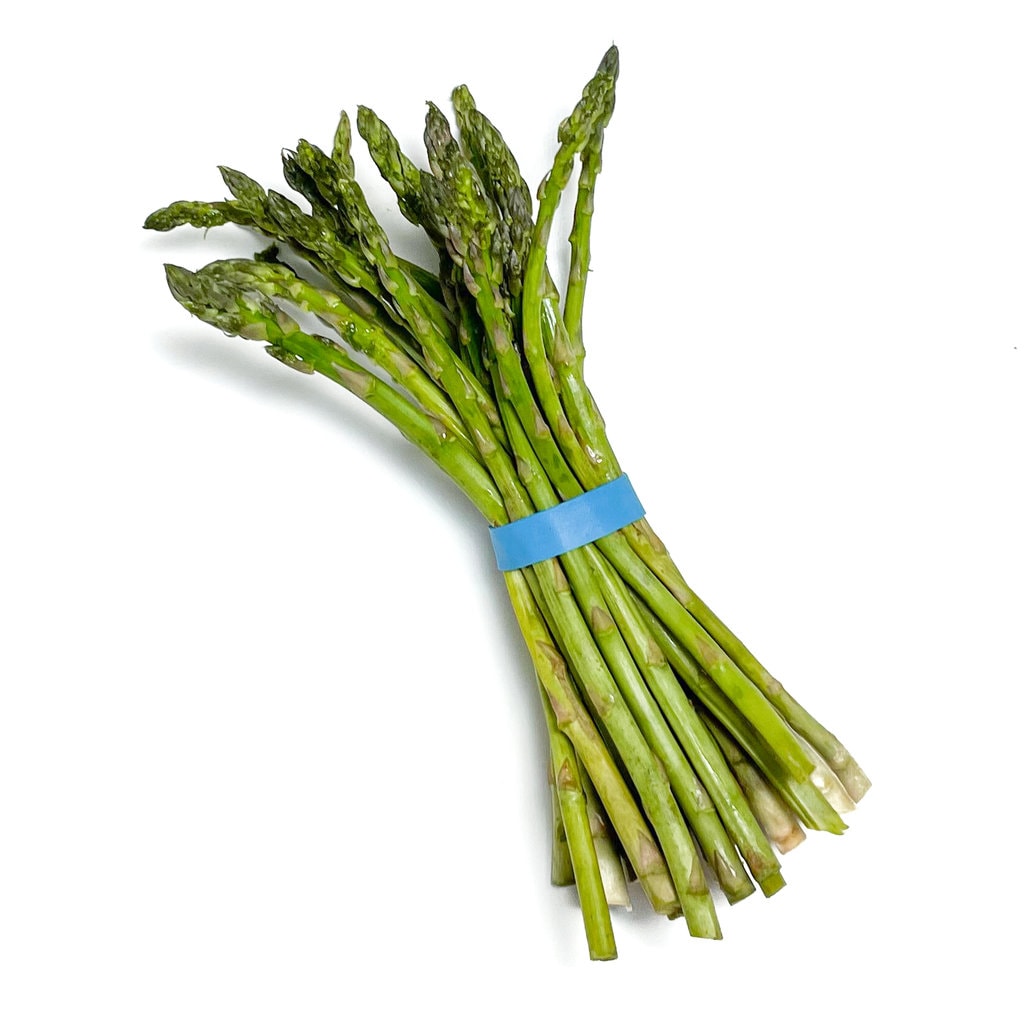
How to Pick Asparagus
Here are some pointers on how to choose the best asparagus:
- Color: Look for stalks that are a bright, vibrant green color. Avoid those with any black spots or wilting.
- Spears: The stems should be firm, straight, and plump. Check the cut ends as well – if they are brittle or cracked, the asparagus has already begun to dry out.
- Crowns: The decorative tips known as the crowns, should be closed tightly and compact.
Frequently Asked Questions
Asparagus can be introduced to your baby when they are ready to start solid foods, which is typically around 6 months of age. It is recommended to wait to introduce the top eight allergen foods to your baby once a few other well-tolerated foods have been introduced, but otherwise foods can be introduced in any order so choose whatever you are most excited for your baby to have.
Yes, asparagus can be a choking hazard due to the shape and its consistency. Make sure you are serving it in an age-appropriate way, such as cutting it lengthwise and cooking it until it has a soft consistency. Always be near baby or toddler when they are eating asparagus to supervise.
No, asparagus is not a common allergen, however, as with any food, start with a small portion and be aware of any signs that might be an allergic reaction after introducing it.
Asparagus does not typically cause constipation in babies. It is high in fiber, which can help alleviate constipation.
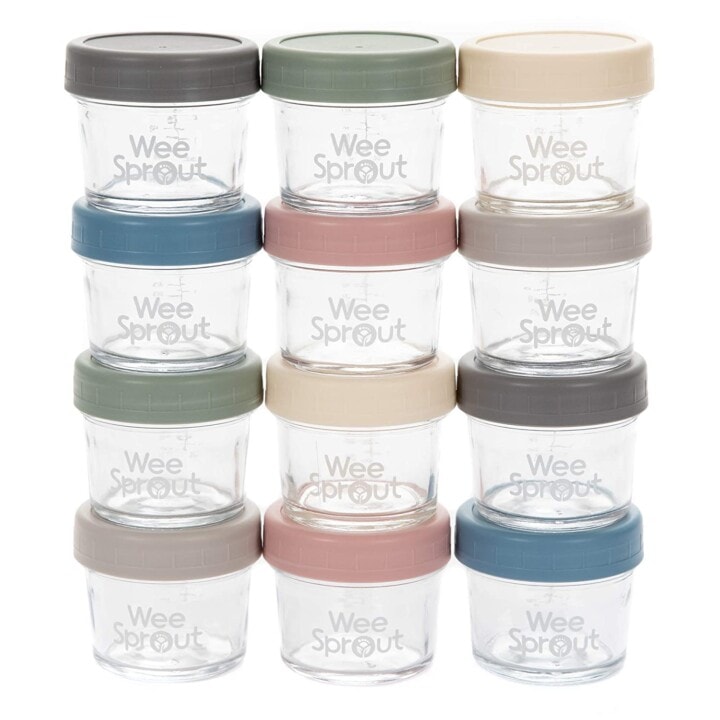
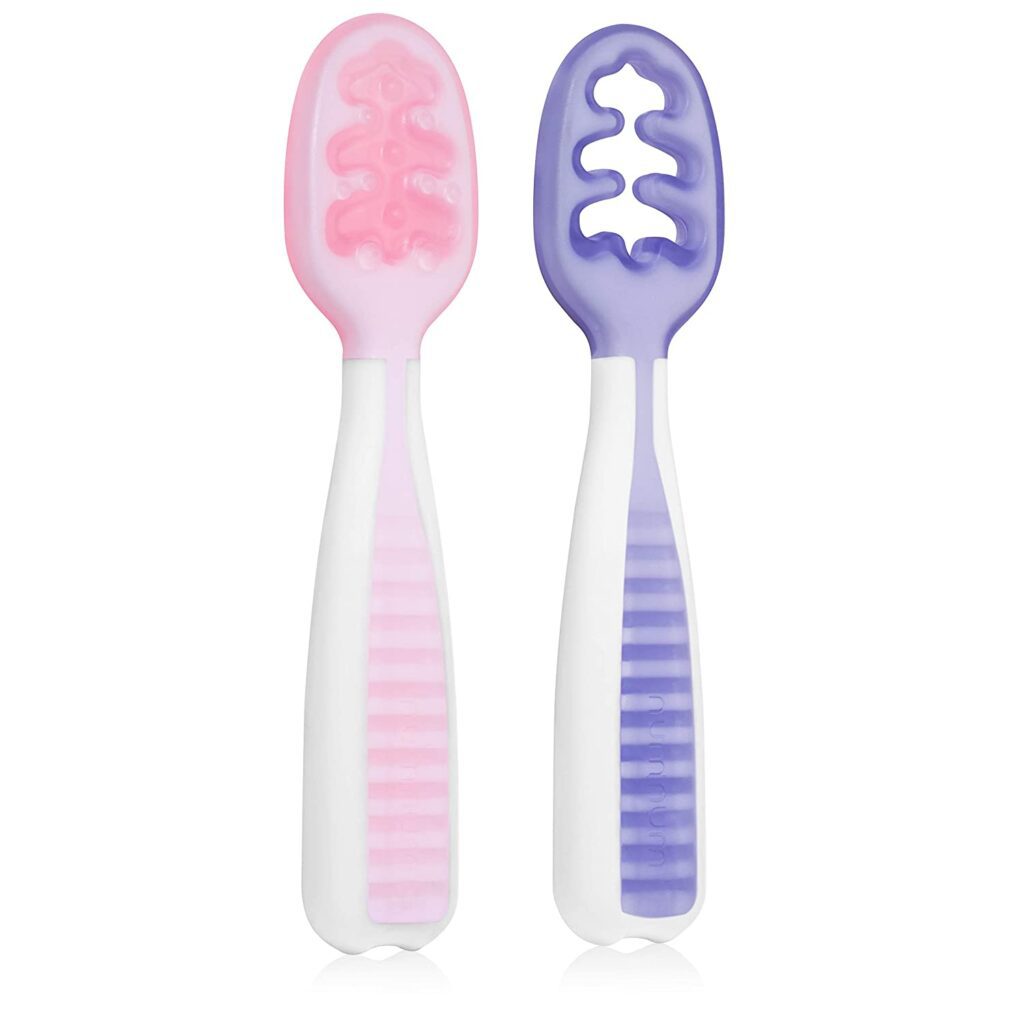
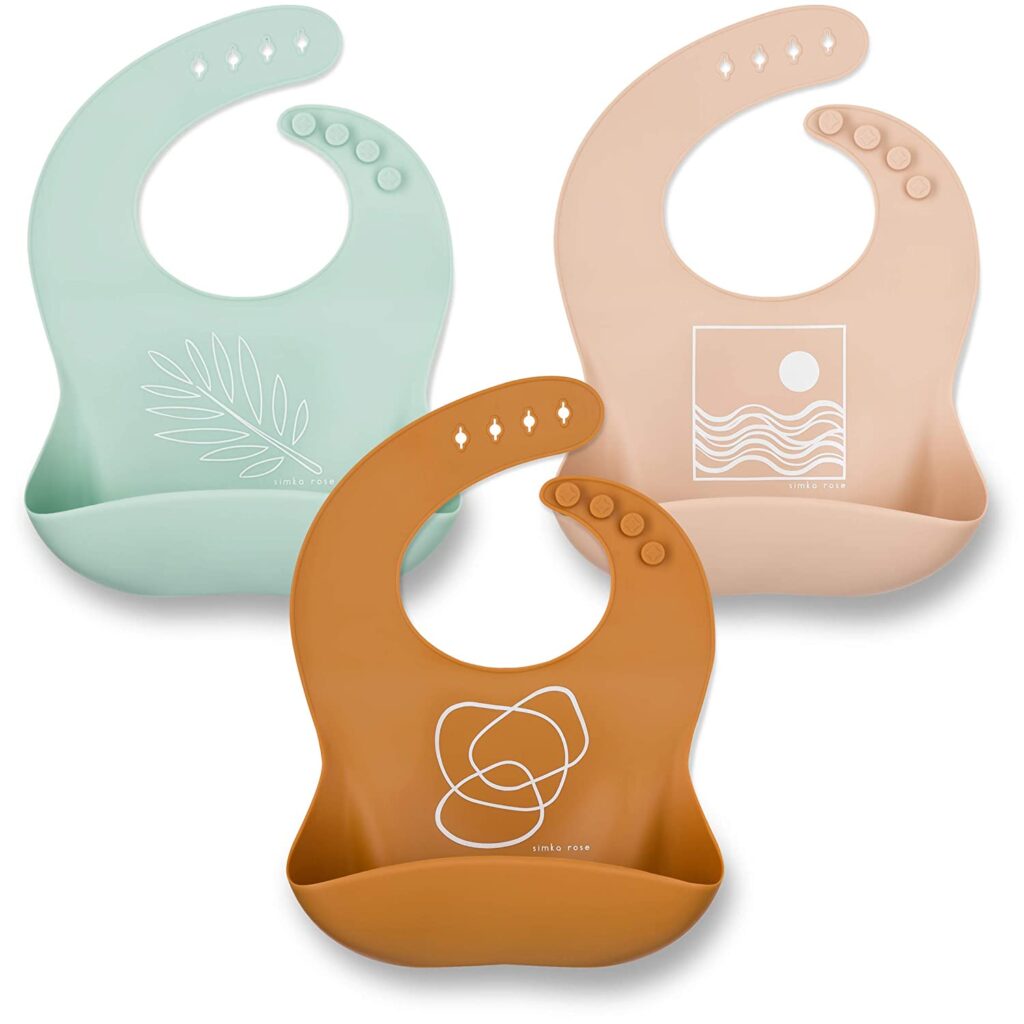

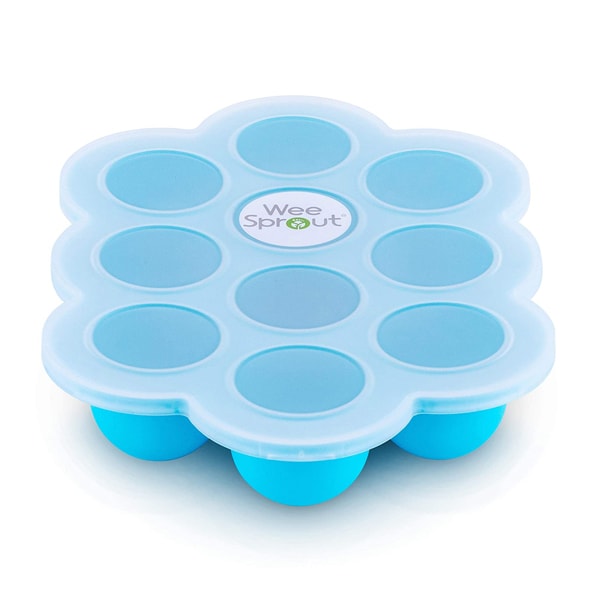
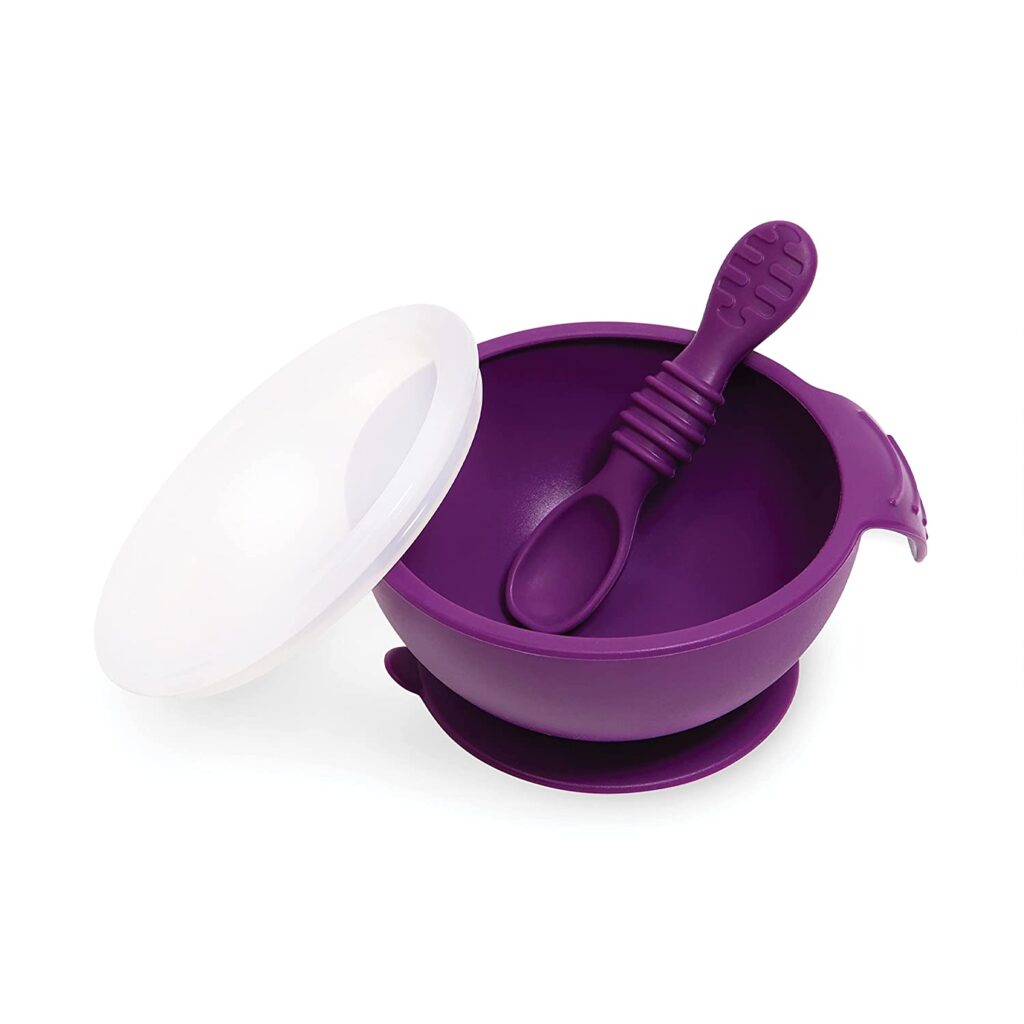
Tools Needed
These tools will make it a lot easier for you to serve asparagus to your baby. For more of my favorite kitchen tools, make sure to check out my shop.
- High chair
- Suction bowl or baby bowl
- Baby spoon
- Bib with catch pocket
- Sleeved bib
- Blender or food processor
- Steamer insert with lid
- Freezer tray
- Storage containers for fridge
- Stasher bag
- Reusable pouches
- Easy to hold fork and spoon
- GOOtensils
How to Prepare Asparagus
There are several different ways to prepare asparagus for your baby. Here are some of our favorite ways:
Roasted
Trim the woody ends from the base of the asparagus spears by cutting off the bottom 2 inches. Toss asparagus with oil or butter and any seasonings. Arrange the stalks in a single layer in a baking dish, then bake until tender at 425 degrees F, for 12-15 minutes.
Steamed
Bring 2 inches of water to boil in a large saucepan with a steamer basket. Trim the bottom 2 inches of asparagus. Place asparagus spears in steamer basket until asparagus is tender, 5-10 minutes depending on thickness.
Sautéed
Trim the bottom 2 inches. Heat a large skillet over medium-high heat. Add oil and swirl to coat the pan. Add asparagus in a single layer and cook, turning occasionally, until tender, about 8-10 minutes.

Asparagus Puree
Making asparagus puree is super easy – all you need is a pan, steamer basket, and a blender or food processor. Simply steam the asparagus, let it cool slightly, and then puree. You can add reserve steamer water and seasonings as needed until you reach your desired consistency and taste.
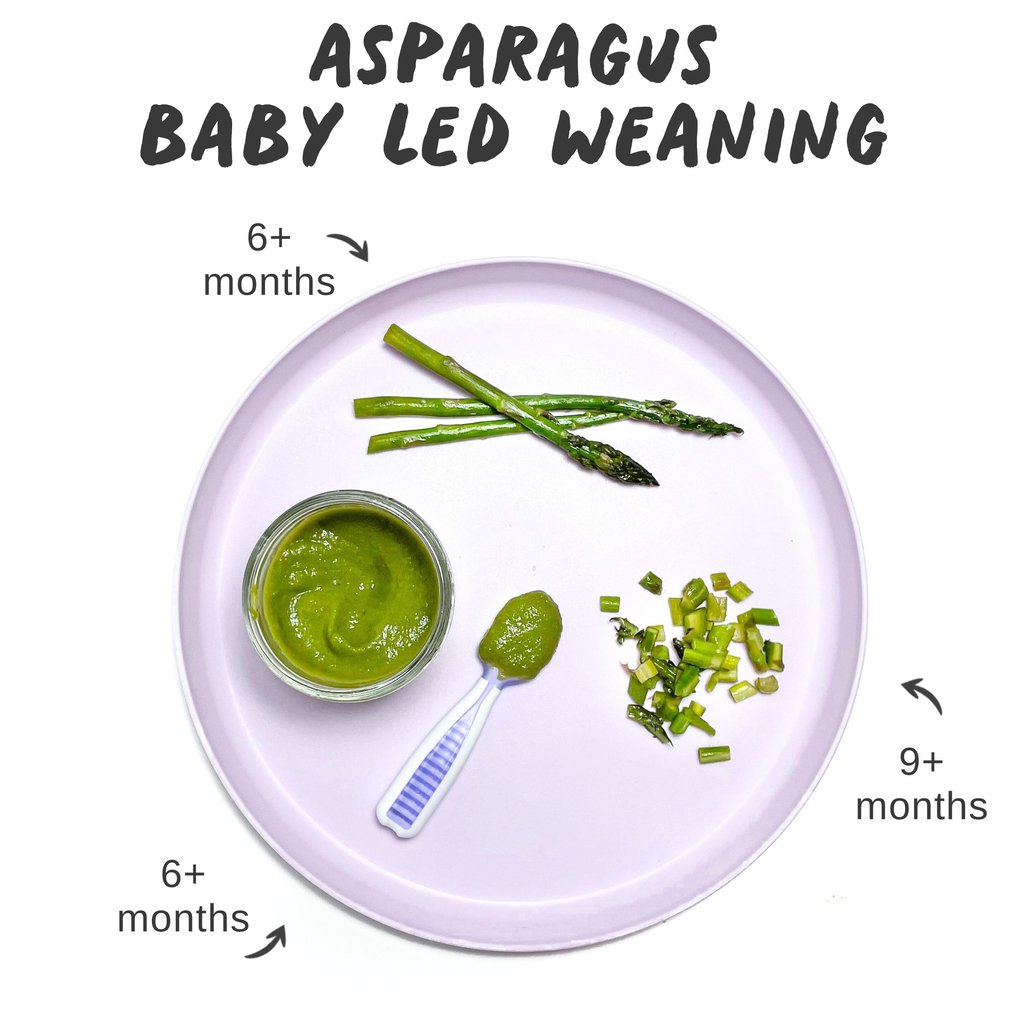
Asparagus for Baby-Led Weaning
Asparagus is a great first source of fiber for your baby to help with digestion. Make sure to cook asparagus until soft for babies and toddlers 6-18 months. You can practice serving raw asparagus once your toddler reaches 18-24 months.
- 6+ months – cooked whole spears: Whole spears will be easier for babies to grab at this age since baby will not have developed the pincer grasp yet for smaller pieces
- 9+ months – cooked spears, sliced in half lengthwise and chopped into small ‘pea’ size pieces: Babies start to develop the pincer grasp, allowing them to pick up small pieces. Slice them lengthwise to change their round shape to reduce the choking risk.
- 18-24+ months – cooked or raw spears: you can also continue to offer cooked pea sized pieces as mentioned above
Storage Instructions
Asparagus Puree
Refrigerator
You can store it in an airtight container in the fridge for up to 4 days.
Freezer
This puree can be frozen for up to 4 months.
- Spoon puree into a freezer storage container – do not overfill.
- Place the lid on the storage container or cover it with a piece of saran wrap and label it with the date and recipe name.
- Place the tray into the freezer and let freeze completely – preferably overnight.
- Pop out the baby food cubes and place them in a zip-lock baggie or stasher bag – don’t forget to re-label the baggie or stasher bag for future reference.
Baby-Led Weaning
You can store cut asparagus in an air-tight container in the fridge for up to 4 days.
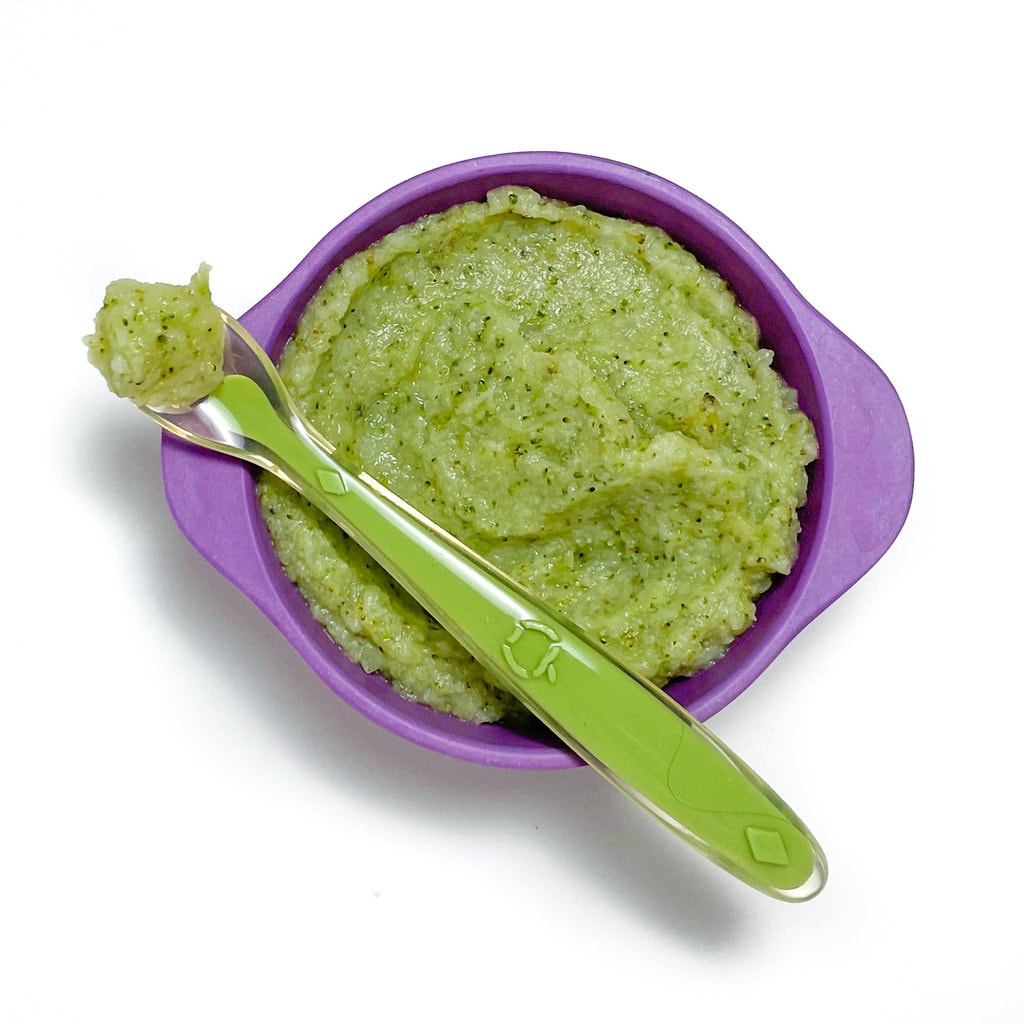
Combination Purees
While Asparagus Baby Puree is great by itself, it’s also super easy to mix and match with other nutrient-dense baby food purees. Give these fun flavor combos a try!
- Apples
- Cauliflower
- Ricotta
- Chicken
- Pears
- Yogurt
- Sweet Potato
- Carrot
- Rice Baby Cereal
More Asparagus Recipes
Broccoli + Asparagus Baby Food Puree with Tarragon
ASPARAGUS + MINT
Green Finger Salad for Baby + Toddler
Chunky Summer Veggie Pasta
Expert Feeding Tips
- Try sauteing, grilling, or roasting asparagus so that spears are soft but still keep their shape for young eaters. Steaming or boiling can make asparagus mushy and difficult to pick up.
- Focus less on the amount consumed, and remember that your baby or toddler is getting lots of great practice building oral motor skills with this stick-shaped food.
- Cut it lengthwise if serving small pieces, especially for babies 9+ months or toddlers who may not have had much exposure to asparagus yet. This way, the asparagus is no longer round and decreases the risk of choking.
- Continue to offer whole-cooked asparagus spears to your toddler to support the oral motor skills needed for taking bites off a food and chewing thoroughly.
- Store fresh asparagus in the fridge upright with the bottom of the stalks in a cup of water.
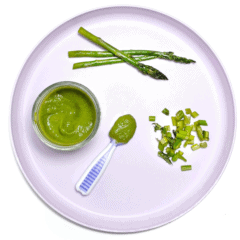
Get the recipe: How to Serve Asparagus to Baby
Ingredients
- 2 cups asparagus, trimmed
- pinch of fresh mint, optional
Instructions
- In a medium saucepan, bring 2″ of water to a boil over medium-high heat. Place the asparagus into a steamer basket, cover, and cook for 8-10 minutes or until tender. Reserve steamer water. Let cool slightly.
For Asparagus Puree
- Place the cooked asparagus into a blender or food processor along with the mint (or other preferred spice or herb, if any). Turn on the blender or food processor and puree for 1-2 minutes on medium. If the puree is too thick, add 1/4 cup of the reserved water at a time, until you achieve desired consistency.
- Serve and enjoy, or store for later.
For Baby-Led Weaning
- Slice or chop the asparagus to be age-appropriate for your baby. Add on a sprinkle of finely chopped mint. Serve and enjoy.
Notes
Did you make this recipe?
Tag @babyfoode on Instagram and hashtag it #babyfoode!

